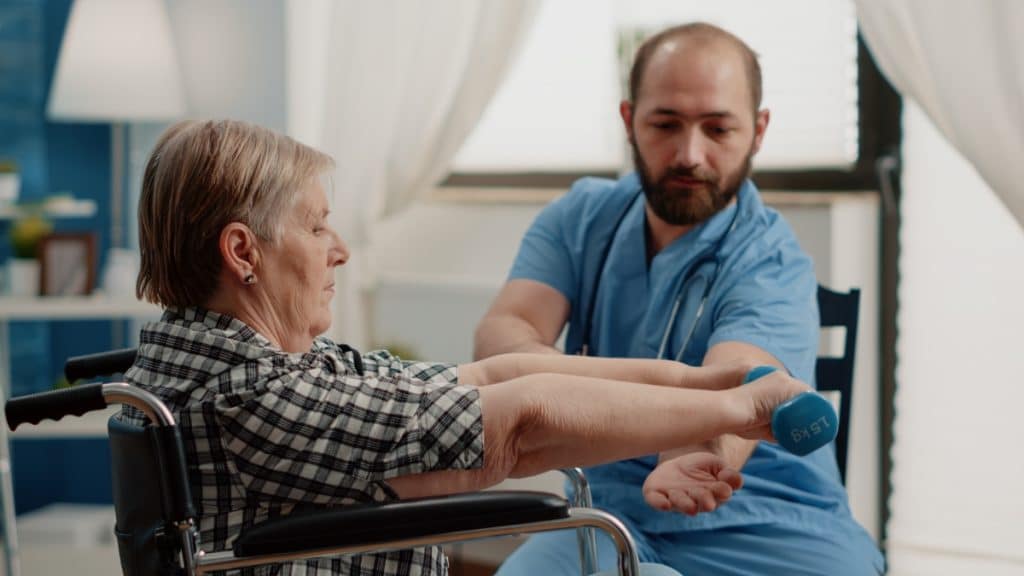When an individual is bed-bound due to illness, injury, or disability, it can be challenging to stay physically active. However, regular exercise is essential for maintaining muscle strength, improving joint flexibility, and promoting overall well-being. Fortunately, there are exercises that can be done while lying in bed, which can help bed-bound patients stay active and healthy.
The Importance of Exercise for Bed Bound Patients
Regular exercise is essential for everyone, regardless of their physical condition. For bed-bound patients, exercise can help prevent muscle wasting, improve circulation, and promote overall well-being. It can also reduce the risk of complications such as blood clots, pressure sores, and joint stiffness.
Bed Bound Patient Exercises
Regular exercise is essential for everyone, regardless of their physical condition. For bed-bound patients, exercise can help prevent muscle wasting, improve circulation, and promote overall well-being. It can also reduce the risk of complications such as blood clots, pressure sores, and joint stiffness.
- Range of Motion Exercises: These exercises help maintain joint flexibility and prevent stiffness. They involve moving the joints through their full range of motion. Some examples include:
- Shoulder Circles: Lie on your back with your arms by your sides. Slowly raise your arms to shoulder level and make small circles with your shoulders. Repeat for 10-15 repetitions.
- Leg Lifts: Lie on your back with your legs straight. Slowly lift one leg off the bed and hold for a few seconds before lowering it back down. Repeat with the other leg. Do 10-15 repetitions for each leg.
- Ankle Rotations: Lie on your back with your legs straight. Rotate your ankles in a circular motion, first in one direction and then the other. Do 10-15 repetitions in each direction.
- Breathing Exercises: These exercises help improve lung function and prevent respiratory complications. They involve slow, deep breathing and can be done lying down or sitting up. Some examples include:
- Deep Breathing: Inhale deeply through your nose, hold for a few seconds, and exhale slowly through your mouth. Repeat for 5-10 repetitions.
- Pursed Lip Breathing: Inhale deeply through your nose, then purse your lips as if you were going to whistle and exhale slowly through your mouth. Repeat for 5-10 repetitions.
- Resistance Training: These exercises help maintain muscle strength and prevent muscle wasting. They involve using resistance bands or weights to perform exercises such as:
- Arm Curls: Lie on your back with your arms by your sides and hold a resistance band in each hand. Slowly curl your arms towards your chest, hold for a few seconds, and then lower them back down. Repeat for 10-15 repetitions.
- Leg Presses: Lie on your back with your legs bent and your feet flat on the bed. Place a resistance band around your feet and press your legs straight, hold for a few seconds, and then lower them back down. Repeat for 10-15 repetitions.
FAQs
Q: How often should bed-bound patients do exercises?
A: Bed-bound patients should aim to do exercises at least once a day, preferably twice a day.
Q: Can bed-bound patients do any exercise?
A: Yes, bed-bound patients can do exercises that are safe and appropriate for their physical condition.
Q: How often should bed-bound patients do exercises?
A: Bed-bound patients should aim to do exercises at least once a day, preferably twice a day.
Q: Can bed-bound patients do any exercise?
A: Yes, bed-bound patients can do exercises that are safe and appropriate for their physical condition.
Q: Do bed-bound patients need supervision when
A: It is recommended that bed-bound patients receive guidance from a healthcare professional before starting any exercise program. They can also receive guidance from a physical therapist who can provide individualized exercise plans based on their specific condition and abilities.
Q: Are there any risks associated with bed-bound patient exercises?
A: As with any form of exercise, there are risks associated with bed-bound patient exercises. Patients should always consult with their healthcare provider before beginning any exercise program to ensure it is safe and appropriate for their condition.
Tips for Safe and Effective Bed Bound Patient Exercises
When performing bed-bound patient exercises, it is essential to keep in mind a few tips to ensure safety and effectiveness. Here are some tips:
Start slowly: Begin with low-intensity exercises and gradually increase intensity over time.
Use proper form: Ensure proper body alignment and technique when performing exercises to prevent injury.
Listen to your body: If an exercise causes pain or discomfort, stop immediately.
Use appropriate equipment: Use equipment that is safe and appropriate for your condition.
Consult with a healthcare provider: Always consult with your healthcare provider before beginning any exercise program.
Conclusion
Being bed-bound does not mean you cannot stay physically active. Regular exercise can help maintain muscle strength, improve joint flexibility, and promote overall well-being. With the exercises mentioned above and the tips for safe and effective bed-bound patient exercises, you can stay healthy and active even while lying in bed.
Remember to always consult with your healthcare provider before starting any exercise program and to listen to your body to ensure safety and effectiveness. By incorporating bed-bound patient exercises into your daily routine, you can improve your physical health and prevent complications associated with a sedentary lifestyle.
